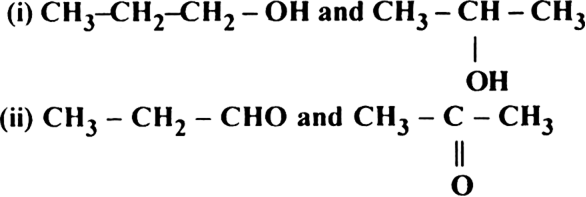Organic Chemistry – Some Basic Principles and Techniques
What is the principle of chromatography? Name the important types of chromatography.
Or
Give a brief description of the principle of chromatography?
Chromatography (Tswett 1906) is a general term which involves processes by which is a mixture of different substances can be:(a) separated, (b) purified and (c) identified. Originally this technique was employed to separate coloured components from their mixture in the form of distinct zones as rings called Chromatograms. Now it is used for the separation and purification of coloured as well as colourless substances.
Principle: The technique of chromatography is based on the fact that different constituents of a mixture are adsorbed to different extents by given adsorbent. The medium which carries the mixture of example solvent (such as ether, benzene, alcohol etc.) is called a moving phase and the medium in which various components are adsorbed (such as alumina, silica gel etc.) is called the stationary phase.
The important types of chromatography are:
(i) Column chromatography
(ii) TLC or thin layer chromatography
(iii) Gas chromatography
(iv) Paper chromatography.
Sponsor Area
Some More Questions From Organic Chemistry – Some Basic Principles and Techniques Chapter
What system of nomenclature is accepted universally?
What are isomers?
How many chain isomers are possible for pentane?
Which characteristic is common to different isomers of a compound?
Name three alkanes which do not show chain isomerism.
Name the types of structural isomerism shown by alkanes.
Name the four main types of structural isomerism.
Write the three possible open chains of five carbon atoms
What types of structural isomerism is shown by the following pairs of organic compounds ?
Write the tautomer of acetaldehyde and write its IUPAC name.
Mock Test Series
Sponsor Area
NCERT Book Store
NCERT Sample Papers
Sponsor Area